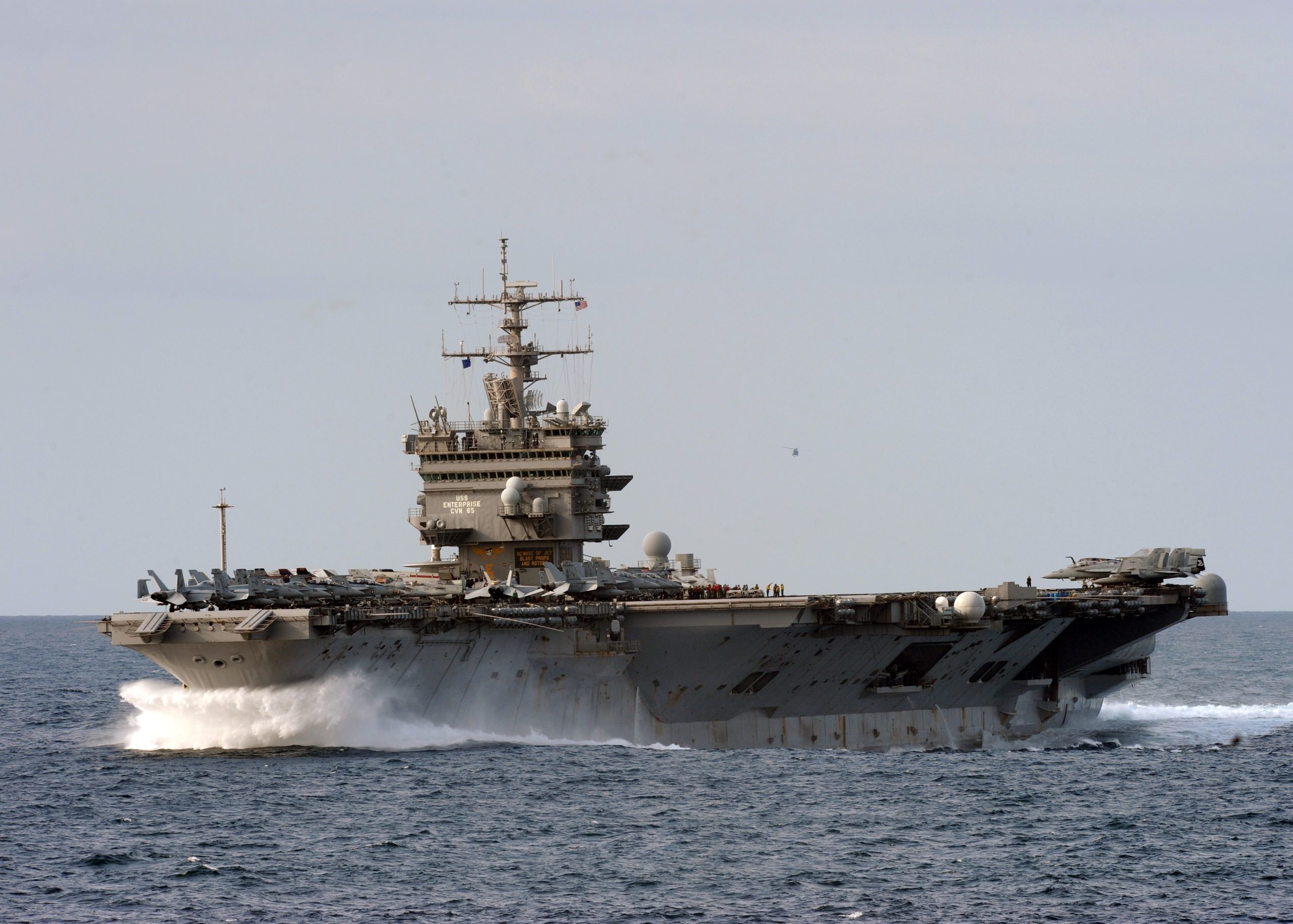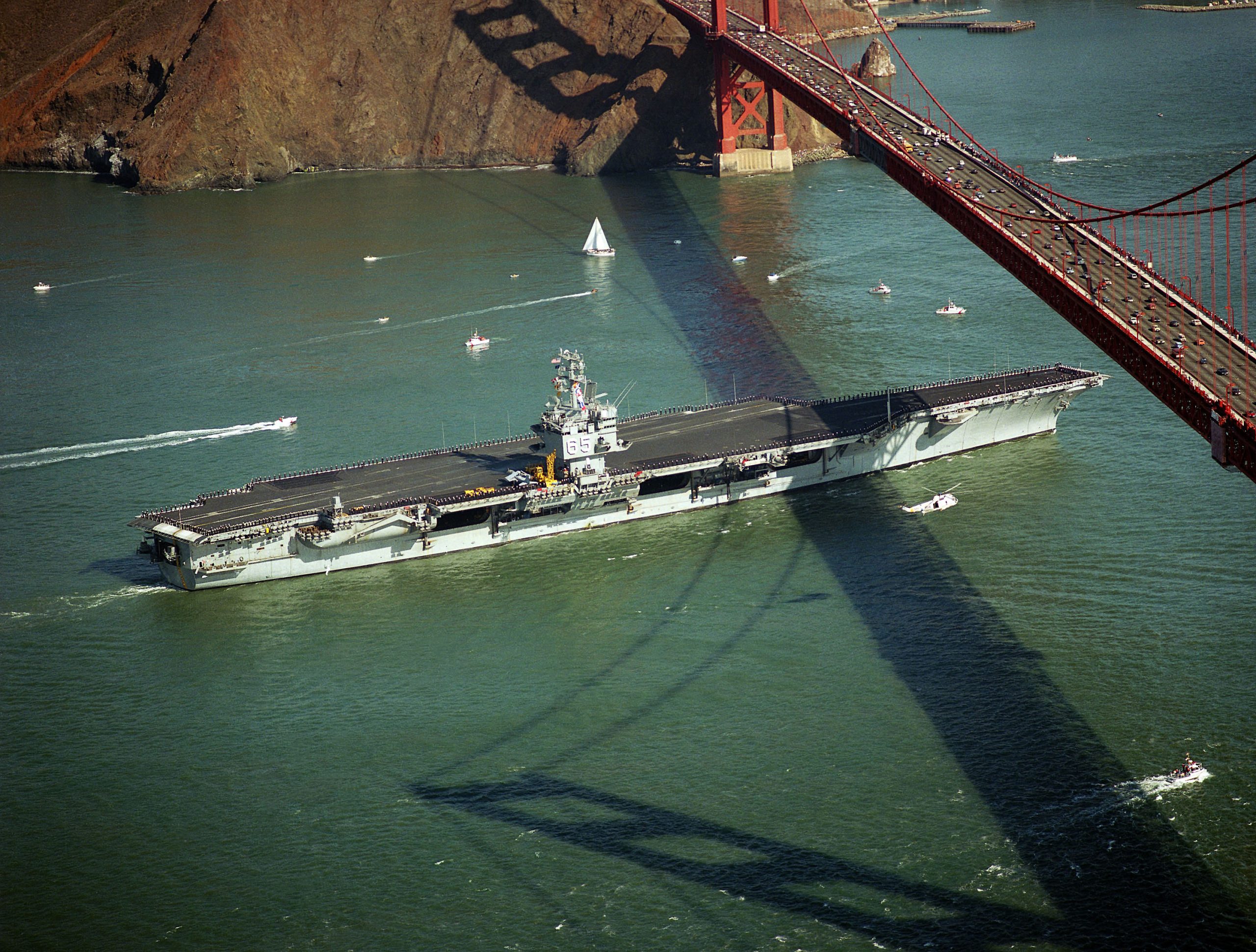
SAN DIEGO (July 29, 2009) The aircraft carrier USS Nimitz (CVN 68) and embarked Carrier Air Wing (CVW) 11 transits into San Diego prior to mooring at Naval Air Station North Island. Nimitz is preparing for a 2009 regularly scheduled Western Pacific Deployment. (U.S. Navy photo by Mass Communication Specialist 3rd Class John Philip Wagner Jr./Released)
The debate over the role of aircraft carriers in contemporary naval warfare remains a hotly contested topic. Proponents and skeptics fiercely argue about the viability and relevance of these floating airbases, especially as nations like China and India commission new and advanced models, and countries such as Russia and Turkey reveal ambitious plans for their naval aviation fleets.

Despite the concerns about their vulnerability and the rise of alternative military platforms, carriers are not just surviving; they’re thriving and evolving.

India, in a bid to keep pace with China’s naval expansions and technological advancements, has confirmed the construction of a new carrier likely equipped with electromagnetic catapults and state-of-the-art combat UAVs, signaling a clear intent to maintain and enhance its presence in naval aviation.

In a parallel leap, Turkey, often overlooked in the conversation, has unveiled plans for a formidable carrier capable of deploying a range of indigenous aerial assets, including the Hurjet fighter and various combat UAVs. As part of its expansion plan, the carrier will initially feature a ski jump take-off aid, with aspirations to develop its own catapult system.

Russia, amidst the ongoing conflict in Ukraine, harbors ambitions to replace its aged carrier Admiral Kuznetsov with the Shtorm 23000E project, although details and progress remain scarce in the public domain.

France, with its commitment to build a new nuclear-powered carrier to replace the Charles de Gaulle, and the UK Royal Navy’s plans to integrate combat UAVs into its air groups, underscore the strategic value carriers continue to hold for global powers.

Beyond the heavyweight operators, numerous smaller carriers, including amphibious warfare vessels equipped with aircraft like the F-35B and AV-8B Harrier, further establish the centrality of fixed-wing naval aviation in modern maritime conflict scenarios.
8-scaled.jpeg)
Despite these advancements, skeptics of the aircraft carrier’s future often cite its susceptibility to aerial attacks and question the allocation of resources toward their development. However, history offers a nuanced view of carrier survivability and strategic versatility. The Korean War, for instance, highlighted the integral role carriers played when land-based airpower was inaccessible.

Carriers have not only proven their worth in smaller conflicts over the last 70 years, as seen from Vietnam to Libya, but their unique ability to project power, provide a mobile and flexible presence, and even deter potential conflicts has been demonstrated time and again, such as the Ark Royal’s deployment to the Caribbean in 1972 and the Taiwan Strait Crisis of 1996.

ATLANTIC OCEAN (Feb. 4, 2012) The aircraft carrier USS Enterprise (CVN 65) is underway in the Atlantic Ocean participating in exercise Bold Alligator 2012. Bold Alligator is the largest naval amphibious exercise in the past 10 years and represents the Navy and Marine Corps’ revitalization of the full range of amphibious operations. The exercise focuses on today’s fight with today’s forces, while showcasing the advantages of seabasing. The exercise will take place Jan. 30 through Feb. 12, 2012, afloat and ashore in and around Virginia and North Carolina. #BA12 (U.S. Navy photo by Mass Communication Specialist 3rd Class Nick C. Scott/Released)
In the arena of great-power warfare, carriers maintain their strategic importance. With the advancement of Chinese ballistic missile capabilities, the mobile and hard-to-detect nature of carriers becomes even more critical, enabling them to spread enemy forces thin and protect key regions.

Modern naval strategies and the continued construction of new carriers across the globe reflect an enduring belief in the aircraft carrier’s central role in maritime dominance. They remain a game-changer on the global chessboard, equipped with increased striking power, enduring resilience, and unparalleled versatility. As nations race to modernize and expand their fleets, the aircraft carrier continues to reign supreme in the hierarchy of naval assets, capable of shaping the geopolitical landscape for decades to come.




Relevant articles:
– A brave new world for aircraft carriers? [Naval Gazing] – Baird Maritime, Baird Maritime
– The Future of the Aircraft Carrier, Naval Gazing
– Ane Mærsk – Methanol-powered boxship boasts 16,000TEU capacity – Baird Maritime, Baird Maritime
– The Battleship and the Carrier, Naval Gazing

